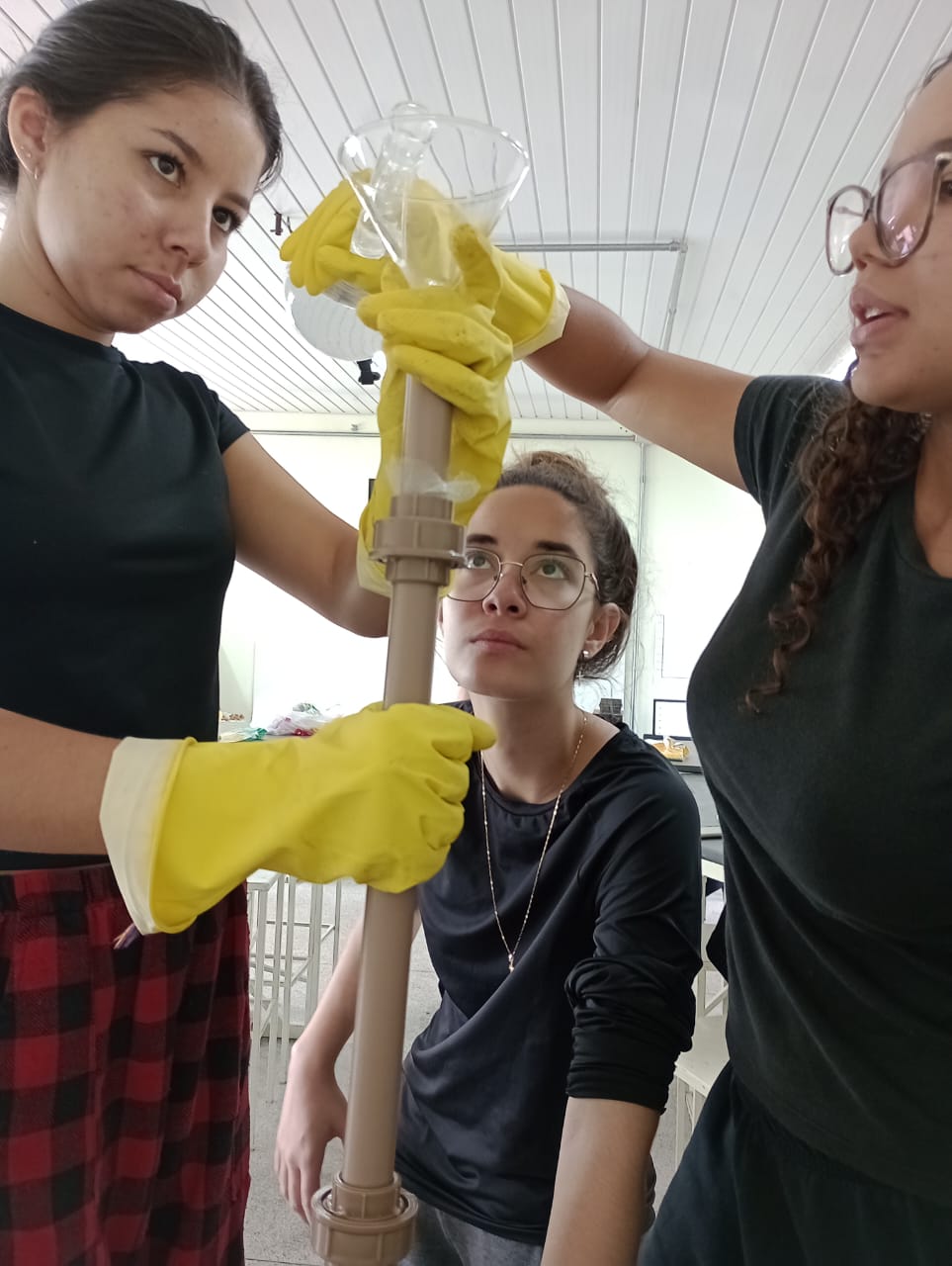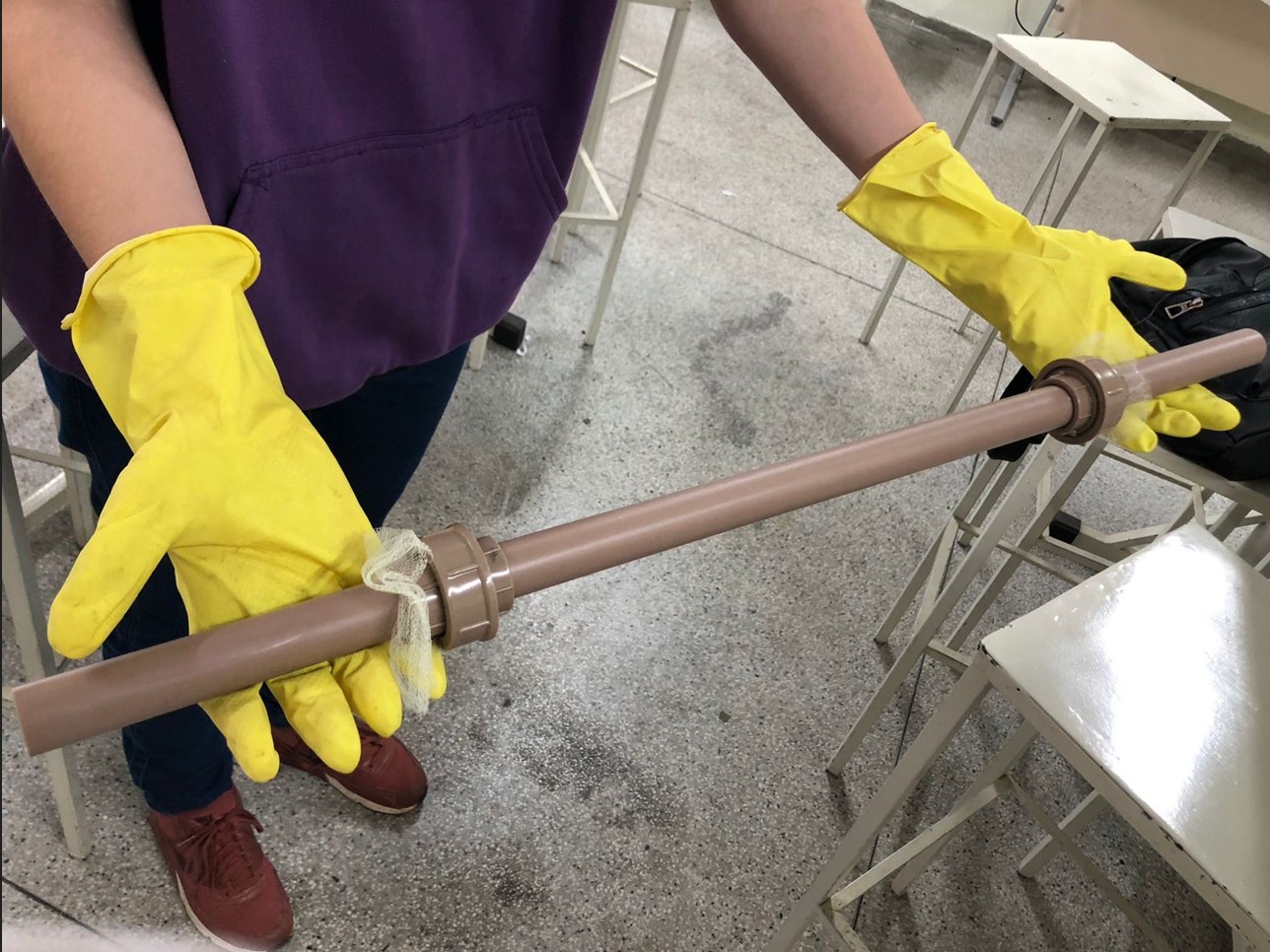The coffee economy is so present in the municipality of Franca, in southeastern Brazil, that it motivated the creation of a discipline dedicated to deepening knowledge about this production chain. Called “Would you like some coffee?”, the subject was the starting point for three students to have the idea of a solution to remove pesticides from coffee plantations using another fruit: the macaúba.
The project, “Macafiltro: uso da macaúba para remoção de agrotóxicos de água contaminada” (In English, Macafiltro: using macaúba to remove pesticides from contaminated water) was a finalist in Solve for Tomorrow Brazil in 2022. Initially, the team researched the possible negative impacts of coffee plantations and, together with mediator teachers Henrique Pereira and Camila Nunes, discovered that pesticides can contaminate water.
The main chemical identified by the team was glyphosate, used to kill weeds that grow alongside coffee. This can cause health problems such as cognitive impairment and cancer. “This pesticide is sprayed on crops and from there, it can infiltrate the soil and fall into the water table or run off the surface and end up in rivers. Since this water is piped by the residents themselves to supply their homes, the idea came up of making a filter that could be attached to the pipes before the chemical reaches the water tank,” explains Pereira, who is a Biology teacher and coordinator of Natural Sciences and Mathematics at the school.
To build this filter, the team decided to produce vegetable charcoal. As a raw material, they used the fruit of a palm tree called macaúba, also known as coco-baboso, coco-de-espinho, or macaúba. The species is so abundant in the rural area of Franca that the seeds often spoil on the ground. In this way, the project would solve two problems in a single prototype: water contamination and macaúba waste.
The team did not set out to produce activated carbon, normally used for filtering, because it would require chemical and industrial processes beyond the student´s possibilities. Therefore, the goal was to produce charcoal from the endocarp of the macaúba tree – that is, the rigid part that protects the fruit’s seed.
The first stage of the prototype was to develop a method to extract the part of the fruit to burn it and to turn it into charcoal. “First, we broke the macaúba coconut with a hammer to remove the endocarp. After much effort, we discovered that, on the ground in the pastures, the pulp of this fruit degraded quickly and only the endocarp was left,” recalls the teacher.
Experience with trial and error
The newly produced macaúba charcoal was crushed in a homemade pestle to make it easier to fit into the filter. The idea then was to place this material inside the PVC pipe attached to the water tanks of the houses in the region, to serve as a filter and to remove pesticides.
Now, how can the charcoal itself not end up in the water after being inserted into the pipe? The students thought of using pieces of tulle, a light mesh-like fabric, to act as a sieve: preventing the charcoal but allowing the water to pass through. However, in the first tests, the layers of tulle proved to be very fragile and broke easily under the force of the water. Next, they tested nylon screens, which are used in fish farms, which also didn’t work. The team then discovered a unique way to use the tulle: they found a more resistant model and folded the fabric three times to trap the charcoal inside the filter. It finally worked!
The target audience for our project is people who live in rural areas and who are often not the owners of the plantation but rather the workers. Therefore, the filter solution needed to be low-cost, emphasizes the teacher.
Testing the capacity to remove pesticides
The materials cost around R$25 (something like 4 dollars), not including the labor to harvest and break the macaúba. But the work didn’t end there. “After building the prototype, we needed to test whether it was efficient in retaining glyphosate. We bought the substance, but the school did not have the resources for laboratory testing. There was only one in the city for this kind of test, costing between R$400 to R$500 (about 70 to 85 dollars), and the results took a long time to be ready,” he recalls.
The teacher paid for the test himself and went ahead. However, these analyses were inconclusive, as the machines are calibrated for the concentration permitted by law, 500 micrograms per liter. “That is less than a grain of sand in a liter of water, and our sample had one spoonful of glyphosate per liter. This was the point when we needed to ask for help to reach a concentration that could be tested in the laboratories,” he adds.
Teacher Henrique Pereira, who had just started a master’s degree at that time, asked a chemistry teacher for help in calculating the parameters of the products. This allowed the students to produce samples with the most appropriate concentration of glyphosate and nitrate to send to another laboratory outside the city.
The results of this new test varied according to the samples. The numbers closest to reality showed a reduction of 18% in nitrate and 6% in glyphosate after filtering with macaúba charcoal.
A transforming lives science
The educator reports that working on scientific projects for high school students is more challenging, but worth it. In the case of “Macafiltro”, contact with scientific methodology increased the team’s academic performance and interest in studying. Currently, the three girls who developed the project are studying in college in the field they dreamed of. One of them developed a taste for science and enrolled in the Chemical Engineering course, determined to change her family history through knowledge. “This student came from an exceedingly difficult family background. With Solve for Tomorrow, for the first time in her life, she saw that dedication to school could lead to new things, reports the teacher.










